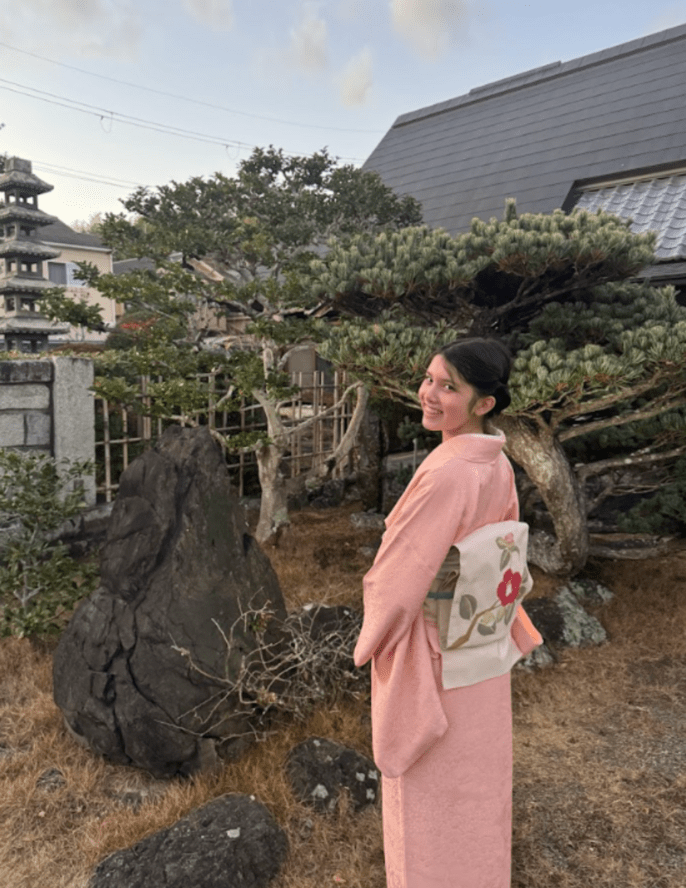The Eye-Opening Differences Between American and Japanese High Schools
Post written by Ambassador Abroad, Luna Sellan, who is currently participating in our High School Semester Abroad program in Kyoto, Japan! Read more to learn about her experience thus far and cultural adjustments she has felt.
Studying abroad is an incredible opportunity to immerse yourself in a new culture and education system. Japanese high schools are quite different from schools in the U.S., making studying abroad here an incredible, eye-opening experience. I’ve been in Japan for six months now and these are some key differences I noticed.
Uniform Culture
Unlike many American high schools, which allow students to dress freely, most high schools in Kyoto and around Japan, even public schools, require uniforms. These uniforms symbolize unity, discipline, and school pride. The idea is that as long as you’re wearing a uniform out in public, you are representing your school’s image and thus, need to act like a model citizen. Uniforms also foster a sense of belonging and eliminate the pressure of fashion trends. Truthfully, the main reason I wanted to come to Japan was to wear a school uniform, and it’s everything I imagined and more.
Extracurricular Activities
Both high schools in the U.S. and Kyoto emphasize extracurricular activities, but the level of commitment is very different. In the U.S., students have the option to juggle multiple clubs and sports, participating when they have the time. In my experience at my American high school, clubs met once a week and I only had sports practice thrice a week. In Kyoto, students typically choose one club—whether it’s a sport, music, or an academic society—and are expected to stick with it all the way through high school (though some students switch around). And by “fully” I mean six days a week, two hours a day. I’m in the Tennis club at my Japanese high school and we meet Tuesdays through Sunday with three-hour practices almost every day. My teacher isn’t that strict, so I can usually get away with skipping once or twice a week, but it really depends on the club and the teacher in charge. Here in Japan, extracurricular activities are taken very seriously to instill discipline, teamwork, and perseverance.
School Cleaning
Japanese schools don’t have janitors. My school here has a groundskeeper, but he cleans the outside, not the inside. In the U.S., I always had janitors that worked behind the scenes, but that’s not a thing here. One of the most unique aspects of Japanese schools is seiketsu, or student-led cleaning. Students in Japan, whether in elementary, middle, or high school, clean their own classrooms, hallways, and even restrooms. This practice teaches responsibility, humility, and respect for shared spaces. It’s a daily reminder of the importance of contributing to the community and taking pride in one’s environment. This probably sounds gross and annoying, but it’s not that bad when you do it with friends!
Why Study in Japan?
Immersing yourself in Japan’s education system is eye-opening and completely transformative. From learning the value of teamwork through club activities to embracing discipline through uniform culture and school cleaning, studying in Kyoto shapes you into a completely different person. If you're ready to broaden your horizons, Kyoto is the perfect place to start!
If you are interested in studying abroad during high school, you can apply here or you can schedule a call with an Enrollment Coordinator to start planning.
Related Posts
Why I Decided to Spend a High School Semester Abroad in Japan
Hi everyone! My name is Luna Sellan and I am a current CIEE Ambassador Abroad participating in CIEE’s High School Abroad Program in Japan . I’ve heard a lot of... keep reading
Exploring Top Attractions In Japan
Post written by CIEE Global Ambassador Gavin Freese who is currently participating in CIEE’s High School Abroad Program in Japan for the academic year. In this post, Gavin shares his... keep reading
What I Packed for My CIEE Semester Abroad
Post written by CIEE Ambassador Abroad Luna Sellan who is currently participating in CIEE’s High School Abroad Program in Japan. In this blog, Luna shares valuable packing tips for studying... keep reading



